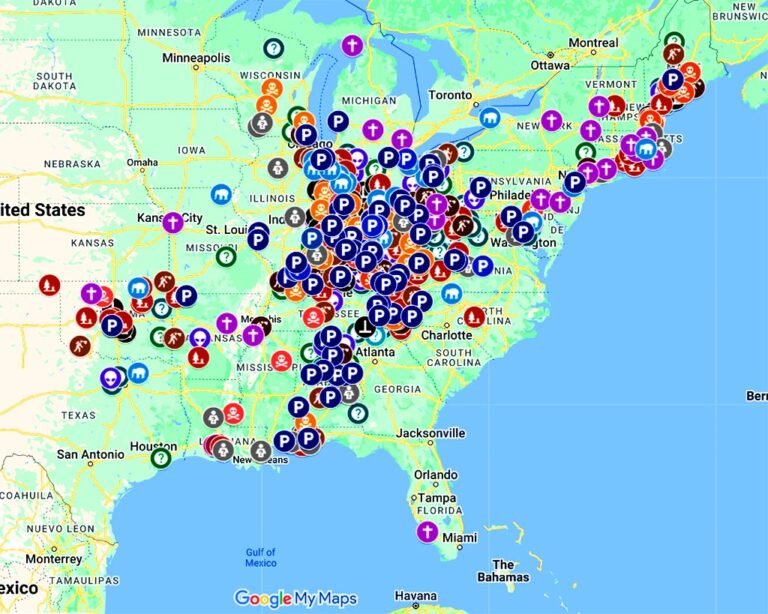What is a Commodified Housing Market?
A commodified housing market refers to a system where housing is treated primarily as an investment or financial asset rather than a basic human need. This framework emphasizes profit maximization and market-driven forces, often prioritizing the interests of investors, developers, and landlords over the needs of individuals and families seeking affordable and stable housing.
Picture this: A bustling city skyline, a testament to modern progress and prosperity. But hidden beneath the gleaming towers, nestled in alleyways and under bridges, lies a stark reality: the plight of homelessness, a stark contrast to the city’s opulence. In America, the land of opportunity, the dream of homeownership often clashes with a harsh reality—a housing market that increasingly prioritizes profit over people.
Did you know?
In some cities, homes sit vacant while people sleep on the streets? This “empty housing paradox” is a stark illustration of a commodified housing market, where homes are treated as commodities to be traded for profit, rather than essential spaces for human habitation and community building. [1]
This isn’t just about numbers; it’s about the lives caught in the crosshairs of a system that often values profits over people. It’s about the families struggling to pay rent, the seniors forced out of their homes, the veterans sleeping on the streets, and the growing sense of despair as the dream of affordable housing fades into the distance.
This article delves into the intricate connection between a commodified housing market and the rise of homelessness in America, exploring how the pursuit of profit, financial speculation, and inadequate regulation have created a system that often prioritizes wealth accumulation over ensuring access to safe, affordable, and stable housing for all.
The Allure of Profit: How Housing Became a Commodity
The transformation of housing from a basic need to a tradable commodity has deep roots, intertwined with economic forces, policy decisions, and cultural shifts. It’s a story of unintended consequences, where the pursuit of profit has often eclipsed the social responsibility to provide housing for all.
- The Rise of Real Estate as an Investment: Housing, particularly in desirable locations, has increasingly been viewed as an investment vehicle, attracting individual investors, real estate investment trusts (REITs), and even hedge funds seeking financial gains through appreciation, rental income, and tax benefits. [2]
- The “Flip This House” Mentality: The popularity of house-flipping shows and the proliferation of real estate investment gurus have fueled a culture of speculation, where homes are seen as opportunities for quick profits rather than long-term residences.
- The Growth of Short-Term Rentals: The rise of platforms like Airbnb has transformed the rental landscape, with landlords often opting to convert long-term rentals into short-term vacation rentals, catering to tourists and further reducing the availability of affordable housing for local residents. [3]
- Deregulation and the Weakening of Tenant Protections: In some cities and states, the deregulation of the housing market has weakened tenant protections, making it easier for landlords to raise rents, evict tenants, and convert properties to more profitable uses, further exacerbating the affordability crisis. [4]
- The Power of Speculative Bubbles: Real estate is prone to speculative bubbles, driven by investor optimism and rising prices. These bubbles can lead to inflated home values, making housing unaffordable for many, and when these bubbles burst, they can leave a trail of foreclosures and economic hardship. [5]
- The “Empty Housing Paradox”: In some cities, a significant number of homes sit vacant, often held by investors or speculators as investment properties, while individuals and families struggle to find affordable housing. This paradox highlights the disconnect between the commodification of housing and the needs of those seeking a place to live. [1]
- The Impact of Tax Policies: Tax policies, such as mortgage interest deductions and property tax exemptions, can incentivize real estate investment, particularly among higher-income individuals, further driving up demand and prices, and potentially exacerbating affordability issues for lower-income families. [6]
The Squeeze on Affordability: How Commodification Impacts Housing Costs
As housing is increasingly viewed through the lens of investment and profit maximization, affordability becomes a casualty. This section explores how commodification pushes up prices, shrinks the availability of affordable options, and creates a chasm between those who can afford housing and those left behind.
- The Supply-Demand Crunch: When demand for housing outpaces supply, as it currently does in many markets across the nation, prices tend to rise. [7]
- Rising Construction Costs: The costs of labor, materials, and land acquisition have all increased, making it more expensive to build new homes and adding to the overall cost of housing. [8]
- Interest Rate Hikes: As interest rates rise, the cost of borrowing money increases, making monthly mortgage payments more expensive and potentially pricing some buyers out of the market.
- Property Taxes and Fees: Property taxes, homeowners insurance, and other associated fees add to the overall cost of owning a home. These costs can vary significantly across states and localities, impacting affordability.
- Location, Location, Location!: Desirable locations with strong job markets, good schools, and amenities tend to command higher housing prices. Coastal cities, tech hubs, and areas with limited developable land often experience the steepest price increases. [9]
- Gentrification and Displacement: The influx of higher-income residents into formerly affordable neighborhoods (gentrification) can displace long-time residents, pushing them into less desirable or more expensive areas, further exacerbating homelessness and creating social and economic tensions. [10]
- The Shrinking Pool of Affordable Rentals: Landlords, seeking to maximize profits, may convert affordable rental units into luxury apartments, condos, or short-term rentals, further reducing the availability of housing options for lower-income residents.
- The Concentration of Ownership: In some areas, large corporate landlords or investment firms have acquired a significant portion of the rental market, concentrating ownership and potentially reducing competition, which can limit tenant options and make it easier for landlords to raise rents. [11]
- The Impact on Wages: Stagnant wages, particularly for low-income workers, exacerbate affordability issues, as the cost of housing outpaces income growth, leaving many struggling to make ends meet. [12]
The Human Cost: Connecting Commodification to Homelessness
The connection between a commodified housing market and homelessness is stark. When homes are viewed primarily as investments, the human needs for safety, stability, and affordability often fall by the wayside.
- Evictions and Foreclosures: In a commodified housing market, evictions and foreclosures are often seen as routine business transactions rather than personal tragedies. Individuals and families may lose their homes due to factors beyond their control, such as job loss, medical expenses, or unexpected rent increases, leading to housing instability and potentially homelessness. [13]
- The “Housing First” Debate: The “Housing First” approach, which prioritizes providing permanent housing for individuals experiencing homelessness without preconditions, challenges the traditional model of requiring sobriety or employment before receiving housing assistance. This shift in perspective reflects a growing recognition that stable housing is a fundamental human need, a foundation upon which individuals can rebuild their lives. [14]
- The Strain on Shelters and Support Services: As the affordability crisis worsens, the demand for emergency shelters and supportive services increases, putting a strain on already limited resources and creating a backlog of individuals and families seeking assistance.
- The Intergenerational Impact: Homelessness can have long-term consequences for individuals and families, affecting educational opportunities, employment prospects, physical and mental health, and even the next generation. Children experiencing homelessness may face greater challenges in school, are at higher risk for health problems, and are more likely to experience homelessness themselves as adults. [15]
- The Social Costs: Homelessness is not just a personal tragedy; it has significant social costs, including healthcare expenses, emergency services, lost productivity, and a diminished sense of community well-being. Addressing homelessness effectively is not just a moral imperative; it’s also an economic necessity. [16]
The Challenges of Addressing Homelessness in a Commodified Housing Market
Finding solutions to homelessness in a system that prioritizes profit over people is a formidable challenge. It requires confronting powerful economic forces, shifting policy priorities, and changing cultural attitudes towards housing.
- Balancing Market Forces and Social Responsibility: Finding a balance between the need for a functioning housing market and the moral imperative to ensure housing for all is a critical challenge.
- Rethinking Zoning Regulations: Addressing exclusionary zoning practices that limit the construction of affordable housing and multi-family units in certain areas is essential for expanding housing options and increasing affordability. [17]
- Promoting Tenant Protections: Strengthening tenant protections, including rent control measures, eviction prevention programs, and legal assistance for tenants facing eviction, can help mitigate the negative impacts of a commodified housing market and create greater stability for renters. [18]
- Investing in Supportive Services: Expanding access to mental health care, substance abuse treatment, healthcare, job training, and other supportive services is crucial for addressing the underlying causes of homelessness and helping individuals rebuild their lives.
- Reframing the Narrative: Shifting the narrative surrounding homelessness from one of individual blame to a systemic understanding that acknowledges the role of economic forces, policy decisions, and societal factors is essential for fostering a more compassionate and effective response.
- The Role of Government: Government plays a critical role in shaping housing policy, from regulating the market to providing subsidies and incentives for affordable housing development. Stronger government intervention is often necessary to counterbalance the negative impacts of a commodified housing market.
What next?
Homelessness in America is a complex challenge, intertwined with economic forces, policy decisions, social attitudes, and a housing market that often prioritizes profit over people. Addressing this crisis effectively requires confronting the underlying forces that contribute to the commodification of housing, expanding the supply of affordable options, strengthening tenant protections, and investing in a robust network of support services.
While the challenges are daunting, there is hope. By embracing innovative solutions, challenging the status quo, and fostering a shared commitment to housing as a human right, we can create a more equitable and compassionate society where everyone has a safe, affordable, and stable place to call home.
Key Takeaways
- A commodified housing market, where housing is treated primarily as an investment rather than a human need, contributes to rising housing costs and can exacerbate homelessness.
- The allure of profit, financial speculation, deregulation, and inadequate tenant protections contribute to the commodification of housing.
- Addressing homelessness effectively requires a multi-faceted approach, including expanding the supply of affordable housing, strengthening tenant protections, and providing comprehensive support services.
- Changing the narrative surrounding homelessness from individual blame to a systemic understanding that acknowledges the role of economic forces and policy decisions is essential for creating lasting solutions.
It’s time to reimagine a housing market that prioritizes people over profit, ensuring that every individual has a chance not just to survive, but to thrive. Let’s work together to build a future where homes are sanctuaries, not commodities, and where everyone has a place to call home.
References
[1] Badger, E. (2017, June 26). The Empty Housing Paradox: Exploring the Link Between Vacancy and Homelessness. The New York Times. https://www.nytimes.com/2017/06/26/upshot/the-empty-housing-paradox-exploring-the-link-between-vacancy-and-homelessness.html
[2] Aalbers, M. B. (2016). The financialization of housing: A global perspective. Routledge.
[3] Wachsmuth, D., & Weisler, A. (2018). Airbnb and the rent gap: Evidence from Berlin. Environment and planning a: Economy and space, 50(6), 1176-1197.
[4] Desmond, M. (2016). Evicted: Poverty and profit in the American city. Crown.
[5] Shiller, R. J. (2008). The subprime solution: How today’s global financial crisis happened, and what to do about it. Princeton University Press.
[6] Hilber, C. A., & Turner, T. M. (2014). Tax benefits and house prices: New evidence from the UK. American Economic Review, 104(4), 1329-1364.
[7] National Association of Realtors. (2023). Existing Home Sales. https://www.nar.realtor/research-and-statistics/housing-statistics/existing-home-sales
[8] National Association of Home Builders. (2023). Cost of Constructing a Home. https://www.nahb.org/news-and-economics/housing-economics/costs-and-financing/cost-of-constructing-a-home
[9] Zillow. (2023). Home Values. https://www.zillow.com/home-values/
[10] Freeman, L. (2005). Displacement or succession? Residential mobility in gentrifying neighborhoods. Urban affairs review, 40(4), 463-491.
[11] Private Equity Stakeholder Project. (2022). The Rise of Corporate Landlords: Impacts on Renters and Communities.
[12] Economic Policy Institute. (2023). The State of American Wages 2022.
[13] Desmond, M., & Gershenson, C. (2016). Housing and employment instability among the urban poor. Social service review, 90(2), 249-283.
[14] Tsemberis, S., Gulcur, L., & Nakae, M. (2004). Housing First, consumer choice, and harm reduction for homeless individuals with a dual diagnosis. American journal of public health, 94(4), 651-656.
[15] Perlman, S., & homelessness: Multidisciplinary approaches. (2018). Intergenerational Trauma of homelessness: Multidisciplinary approaches. Routledge.
[16] National Alliance to End Homelessness. (2023). The Cost of Homelessness.
[17] Urban Institute. (2022). Zoning Reform and Affordable Housing: A Guide for Policymakers.
[18] Nolo. (2023). Tenant Rights and Protections: A Guide for Renters.



















+ There are no comments
Add yours